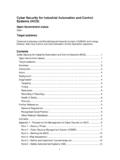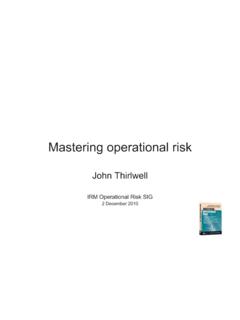Transcription of Steps in the Transition ProcessW - Hull Strategies
1 Steps in the Transition Process Endings, Beginnings and the Muck in the Middle Change impacts a variety of dynamics in your business and with people. How ready is your organization's infrastructure to support the up-coming change? For example, new technology requires technical training, which may require a workforce with a different skill-set. Re- organization requires a new management style and redefined roles. This paper was originally written for an organization about to undergo reorganizing and possible outsourcing of several support functions, while changing two major software systems It was used as an outline of the Steps required for successfully managing these transitions and others under consideration.
2 It has been modified to use as a checklist for many types of organizational change. It is not intended as, and does not provide legal advice. 1. Model and Phases 2. Training 3. Transition Team Tasks 4. Communication Strategy 5. Retention Planning 6. Severance Planning 7. The Morning After 1. MODEL and PHASES. There are many models or structures for planning change. Project management models focus on the tasks to be completed, but often overlook the human side of what is happening. The most well thought out project can be derailed if the people it impacts are not included in the early planning stages, or have faulty assumptions made about them.
3 Generally the benefits of the change focus on customers and shareholder return. But the people who are to carry out or implement the change are also stakeholders. Effective change management includes building a profile of the people impacted by the change. There are two major questions to ask: 1. What's in it for them? Upgrading our software will make things go much smoother. Our new building will be much brighter and more convenient for our customers. Our new CEO will bring new ideas and help us grow.. 2. What will be the downside of the change for them?
4 Why wouldn't our staff be happy about upgrading our primary software application? What changes will they have to make to accommodate the difference? How will hours or commute to the new location effect our staff? . Managing change is a combination of planning and selling both the need for the change, the benefits of the change, as well as how we will address the known downsides and inconveniences or unknowns during the process of change. It's the unplanned change that can throw us for a loop - a sudden change in leadership, power outages, re-organization - anything that disrupts our normal business routines.
5 The point is to help people deal with the change with as much advance notice as possible and also to have a contingency plan. There will always be those who claim they didn't have enough time to get ready R. Anne Hull 2000 Page 1 of 10. Hull Strategies , LLC For your personal use only. Do not duplicate without permission. (Is 3 months enough time for parents to adjust to new school start times?) The other side of the argument is if we tell them too early, they panic or procrastinate and are less productive. Effective change management is based in trust and respect for all parties involved.
6 In many organizations, there is an us versus them' dynamic between management and staff. This sets up an expectation that the change will be detrimental to the staff. Be honest with what you know as well as what you don't know. Tell them what they can have or do, not just what they cannot. Be respectful that they are intelligent people with their self-interests, business relationships and professionalism at stake. The Model Many times we see change as something that we lose or something that we gain. It is more than 1. just the end of one thing and the beginning of something new.
7 William Bridges, PhD provides our foundation model for effective change management in three pieces: The Ending of the way things have been, the Transition , and the Beginning of the new reality. The END Phase Careful thought can create a caring and sensitive environment for tough decisions. The following elements can begin to build a bridge from the old to the new: - Clarify what is over, and what continues as now. Be sure to communicate what stays the same as well as what is changing. - Plan for what will come to an end and how it will happen. For example.
8 If new computer systems are being installed, explain how and when data will be merged to the new system. Tell them what happens to the old' data. Which skills or processes will they no longer need? - Consider who will lose or gain something both tangible and intangible. The types of things that might be gained or lost could include: Turf - physical space, expertise-based responsibility, organizational power Attachment - peer relationships, mentor relationships, trusted staff, group membership Structure - time schedules, routine responsibilities, familiar procedures /priorities Future - dreams about, expectations of, plans for personal / professional life Meaning - how things make sense, reasons or purpose of things Control - over their own situations, assumed control over others or information - Plan for retention, and, if necessary plan for severance.
9 Out-placement as well as in- placement and how to communicate this with people. They want, and deserve, lots of information to address their need for security and a sense of justice or equity. - Time frames are important to set expectations and to reduce denial. Many change initiatives have derailed because time frames kept slipping. - Coach managers on how to manage people through this period and deal with anxiety, fear, anger, denial, resistance or even euphoria that will impact productivity. The challenging role of the manager is help their staff let go at their own pace, yet not lag too far behind in getting on board.
10 - Create events and meetings to bring closure and boundaries. Some events already exist in the project task plan ( , closing dates). Publicly and appropriately acknowledge these events. One company piled up all the old system manuals and lit a bonfire. - Attend to the symbolic and pay attention to the little things that we ask of people or do differently that undermine their security (or, in some cases create a misplaced sense of dependency). For example, if an administrative person no longer needs to schedule meetings because individuals can do their own scheduling, what other responsibilities might he/she lose?





